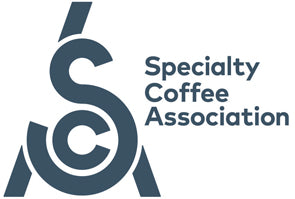Welcome
Hello and welcome to the Dog and Hat Coffee Manchester Coffee Festival Cupping experience.
If you've found this page, then it means that you won a box of mystery coffee from us at the Manchester Coffee Festival - well done!
You can find the answers at the bottom of this Blog.
What's in the box?
In your box you will find two coffees marked A,B,C or D and your challenge is to work out what coffee you received.
We will be hosting a live cupping on Instagram Live on Wednesday 10th November at 18:30 to run through each of the coffees and hopefully you can join us then (we will recorded it and upload to IGTV, YouTube and our Podcast afterwards).
Equipment Needed
For this coffee experience you will also need the following equipment:
- 2 x Bowls capable of holding 150ml of hot water
- 2 x Spoons (soup spoons work pretty well)
- Set of scales
- A kettle
- A timer
- Pen or Pencil for making notes
Introduction to Cupping
Cupping is a brewing technique used by coffee professionals to help them analyse the sensory qualities of the coffee in a repeatable manner - the key sensory qualities tested are fragrance (smell of the dry ground coffee), aroma (smell of the wet ground coffee), taste (the flavours when you drink the coffee) and body (how the coffee feels in your mouth).
Cupping is an exercise you can keep practicing at home and the more you practice the more differences and flavours you’ll be able to identify.
The key is that there are no right or wrong answers to what you can taste or smell - so go on, get stuck in!
Cupping Instructions
- Weigh out 10g of coffee and grind (similar to as you would for a French press) into your bowl. Have a good sniff and make a note of what you smell.
- Boil your kettle and then let it cool for 30 secs.
- Gently pour 150ml of hot water onto the ground coffee, making sure all the coffee grounds are saturated. Start the timer and wait 4 minutes.
- Use your spoon to break the crust of coffee on the top of the bowl and sniff the coffee. Again, make a note of what you smell.
- If there are any coffee grounds on the top of the bowl, scoop these off with your spoon now and discard.
- Wait for the timer to reach 9 minutes and then start tasting.
- To taste, take your spoon and collect some coffee from the bowl. Take a good, loud slurp of the coffee and make a note of what you taste. Also think about how the coffee feels in your mouth (the body) and make a note of that too.
- We will repeat this step a few times as the coffee cools down and starts to highlight different aspects of the coffee.
- Write down which coffee you think is which.
Origins
For those that took part, thank you very much and we hope you enjoyed yourselves.
The answers are below:
Coffee A = Washed Ethiopia
Coffee B = Washed Guatemala
Coffee C = Washed Kenya
Coffee D = Anaerobic Natural Indonesia


